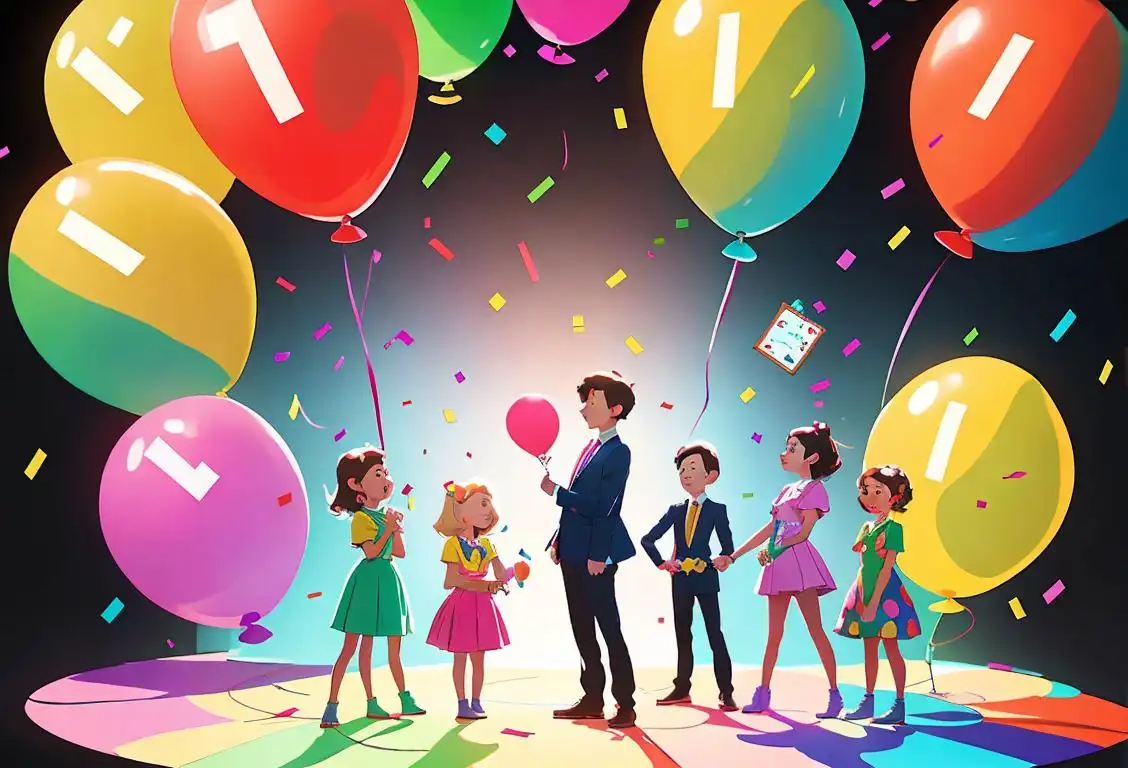National Math Storytelling Day

Welcome to National Math Storytelling Day! Prepare to embark on a numerical adventure filled with excitement, imagination, and maybe even a little bit of multiplication mischief. This special day celebrates the beauty of math through storytelling, combining the power of words with the wonders of numbers. So, grab your calculators and cozy up for a journey that will leave you counting on joy!
When is Math Storytelling Day?
It's national math storytelling day on the 25th September.
The Origins of National Math Storytelling Day
Before we dive deep into the world of math storytelling, let's uncover the origin of this fantastic celebration. National Math Storytelling Day first came into existence when a brilliant group of educators realized the potential of blending math and storytelling to make abstract concepts more engaging and relatable for students. With a goal to transform math from daunting equations to enchanting tales, they set out to create a day of mathematical storytelling magic.
Today, National Math Storytelling Day continues to grow in popularity, enchanting young and old alike with tales that unfold through numbers, formulas, and equations. It's a day when math becomes a captivating story waiting to be shared with loved ones, sparking the imagination and embracing the joy of learning.
The Art of Math Storytelling
Math storytelling is a unique blend of creativity and problem-solving, aiming to bring mathematical concepts to life through narratives, characters, and scenarios. It's like giving numbers their own little adventure, complete with heroes, villains, and unexpected plot twists.
By infusing storytelling techniques into math lessons, teachers can captivate students' attention and create a deeper understanding of mathematical principles. From word problems that unfold like puzzles to narratives that unravel complex formulas, math storytelling encourages students to think outside the box and discover the joy of math in unexpected ways.
Fun Ways to Celebrate National Math Storytelling Day
Ready to join the mathematical story brigade? Here are some fun ideas to make your National Math Storytelling Day unforgettable:
- Host a math-themed story hour with friends or family. Take turns telling stories that weave math into the fabric of the plot. Who knew that numbers and narratives could go hand in hand?
- Organize a math treasure hunt, using clues and equations to lead participants to hidden mathematical treasures. You'll explore the magical world of numbers as you decipher each clue and unlock the final mystery!
- Create your own math superhero or villain. Give them a numerical superpower, like the ability to divide anything by zero or the power to solve mind-boggling equations in a single leap. Let your imagination run wild!
- Challenge yourself with math puzzles and riddles. Test your skills and see if you can crack those code-like calculations. It's like a fun brain workout that flexes your problem-solving muscles.
Did You Know?
Did you know that math storytelling can be traced back to ancient civilizations? In ancient Egypt, mathematical word problems were inscribed on tomb walls to challenge and entertain future generations. So, next time you solve a math story, imagine yourself as a modern explorer continuing a legacy that spans thousands of years!
History behind the term 'Math Storytelling'
1990
The Birth of Math Storytelling
In 1990, the concept of 'math storytelling' was born. Math storytelling refers to the practice of using stories and narratives to teach mathematical concepts. It aims to make math more accessible and engaging by presenting it in a relatable and understandable context. By embedding math within stories, educators and parents can capture the interest and imagination of young learners, helping them develop a deeper understanding of mathematical concepts while making connections to real-life situations. The idea behind math storytelling is to break away from the traditional approach of rote memorization and formula application, offering a more holistic and enjoyable learning experience.
1994
The Emergence of Math Storytelling Books
In 1994, the first wave of math storytelling books began to emerge. These books incorporated mathematical concepts and problems into captivating stories, providing an interactive and engaging way for children to learn and practice math skills. These stories often featured relatable characters, exciting adventures, and puzzles that required mathematical thinking to solve. By presenting math in a narrative format, these books appealed to children's natural curiosity and imagination, making math more enjoyable and less intimidating.
2002
Math Storytelling Goes Digital
In 2002, with the advent of digital technologies, math storytelling took a leap forward. Interactive educational software and online platforms began to incorporate math storytelling elements, offering animated narratives and interactive activities to teach mathematical concepts. This digital approach allowed for more dynamic and personalized learning experiences as children could engage with the stories through interactive games, quizzes, and simulations. By combining visuals, sounds, and interactive elements, math storytelling in the digital realm became even more immersive and engaging.
2010
Math Storytelling in the Classroom
By 2010, math storytelling had gained recognition as an effective educational tool, and its integration into classrooms became more prominent. Teachers started incorporating math storytelling techniques into their lesson plans, using storybooks, digital resources, and even live storytelling performances to engage students in math learning. The use of math storytelling in the classroom fostered a positive and creative learning environment where students could develop a deeper understanding of math concepts while enhancing their critical thinking, problem-solving, and communication skills.
2021
Continued Popularity and Future Developments
Math storytelling continues to gain popularity as a pedagogical approach that promotes math literacy and enjoyment. With the widespread availability of math storytelling books, educational apps, and online resources, children now have a variety of avenues to explore math concepts through storytelling. Furthermore, ongoing research and development in the field aim to enhance math storytelling techniques, making them more inclusive, culturally diverse, and aligned with different learning styles. The future of math storytelling holds great potential for fostering a lifelong love and appreciation for mathematics in learners of all ages.
Did you know?
Did you know that math storytelling can be traced back to ancient civilizations? In ancient Egypt, mathematical word problems were inscribed on tomb walls to challenge and entertain future generations. So, next time you solve a math story, imagine yourself as a modern explorer continuing a legacy that spans thousands of years!Tagged
education storytelling imagination learning mathematicsFirst identified
25th September 2019Most mentioned on
25th September 2019Total mentions
25Other days
Math Storytelling Day
Outdoor Classroom Day
Numeracy Day
Student Day
Education Day
Instruction Day
Summer Learning Day
Stem Day
Tell A Story Day
Mentoring Day








